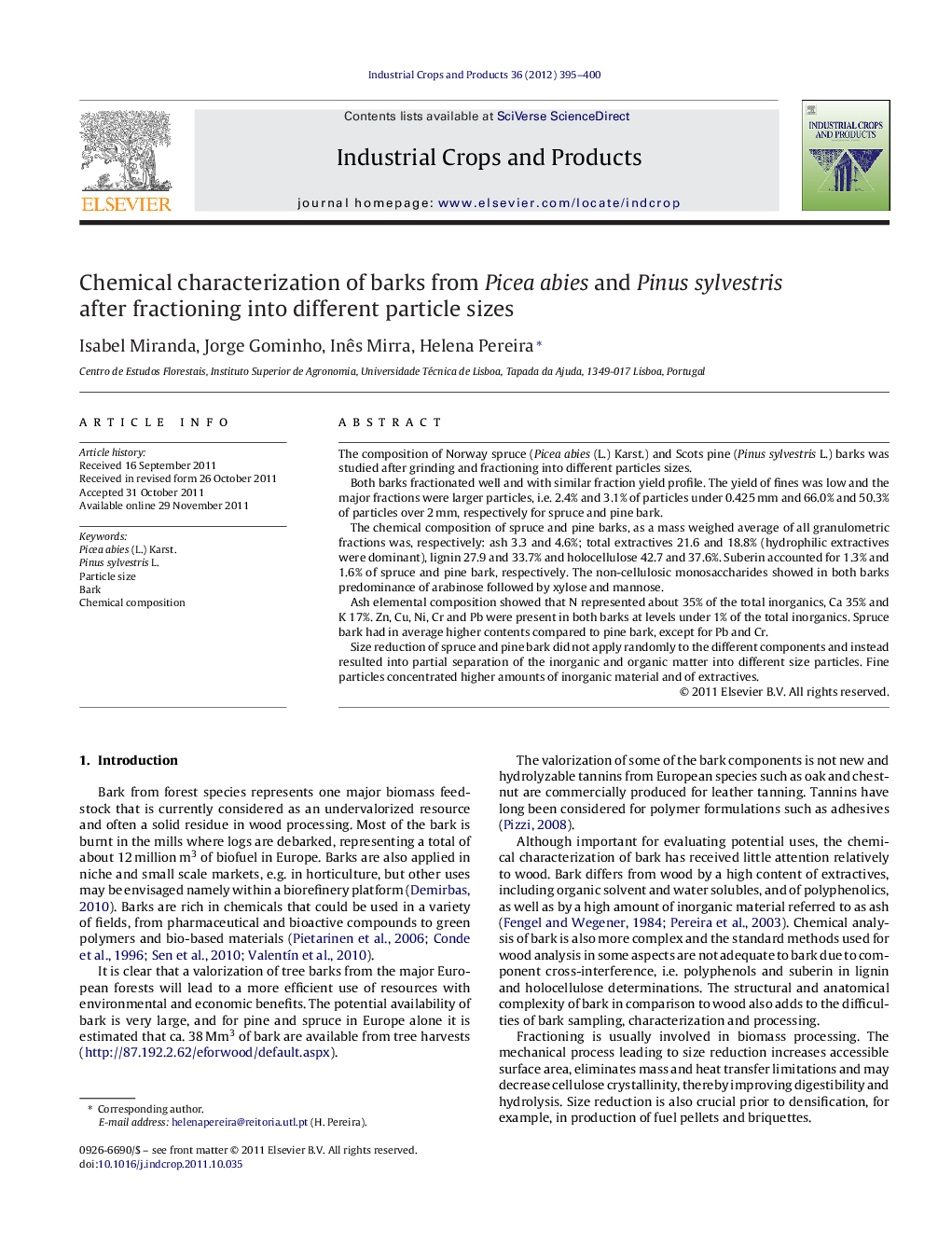| کد مقاله | کد نشریه | سال انتشار | مقاله انگلیسی | نسخه تمام متن |
|---|---|---|---|---|
| 4514401 | 1322209 | 2012 | 6 صفحه PDF | دانلود رایگان |

The composition of Norway spruce (Picea abies (L.) Karst.) and Scots pine (Pinus sylvestris L.) barks was studied after grinding and fractioning into different particles sizes.Both barks fractionated well and with similar fraction yield profile. The yield of fines was low and the major fractions were larger particles, i.e. 2.4% and 3.1% of particles under 0.425 mm and 66.0% and 50.3% of particles over 2 mm, respectively for spruce and pine bark.The chemical composition of spruce and pine barks, as a mass weighed average of all granulometric fractions was, respectively: ash 3.3 and 4.6%; total extractives 21.6 and 18.8% (hydrophilic extractives were dominant), lignin 27.9 and 33.7% and holocellulose 42.7 and 37.6%. Suberin accounted for 1.3% and 1.6% of spruce and pine bark, respectively. The non-cellulosic monosaccharides showed in both barks predominance of arabinose followed by xylose and mannose.Ash elemental composition showed that N represented about 35% of the total inorganics, Ca 35% and K 17%. Zn, Cu, Ni, Cr and Pb were present in both barks at levels under 1% of the total inorganics. Spruce bark had in average higher contents compared to pine bark, except for Pb and Cr.Size reduction of spruce and pine bark did not apply randomly to the different components and instead resulted into partial separation of the inorganic and organic matter into different size particles. Fine particles concentrated higher amounts of inorganic material and of extractives.
► Barks of Norway spruce and Scots pine have a significant content of extractives.
► Both barks fractionated well by milling and with similar fraction yield profile with a low proportion of fine particles.
► The fractions with the smaller particle size concentrated higher amounts of inorganic material and of extractives.
► Milling and particle size separation may be used in bark utilization as pretreatment for selective enrichment or reduction of targeted components and applications.
Journal: Industrial Crops and Products - Volume 36, Issue 1, March 2012, Pages 395–400